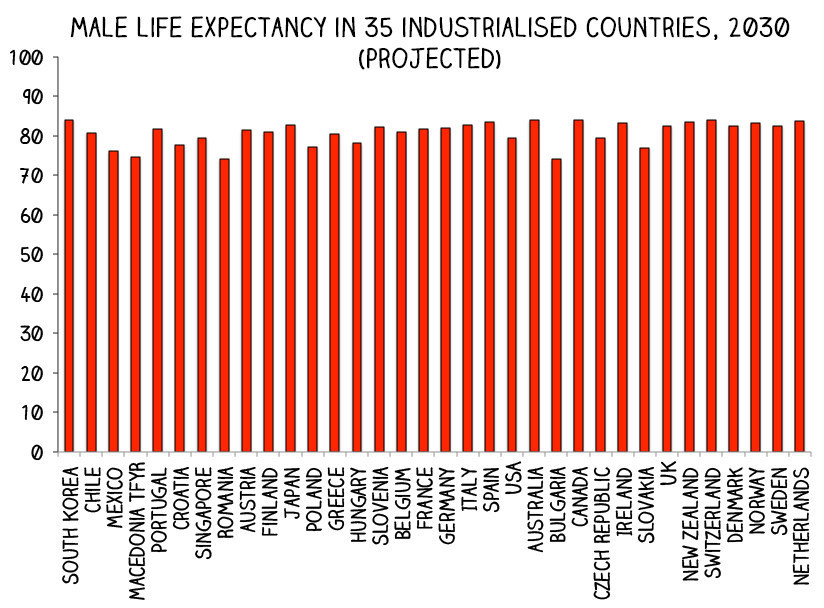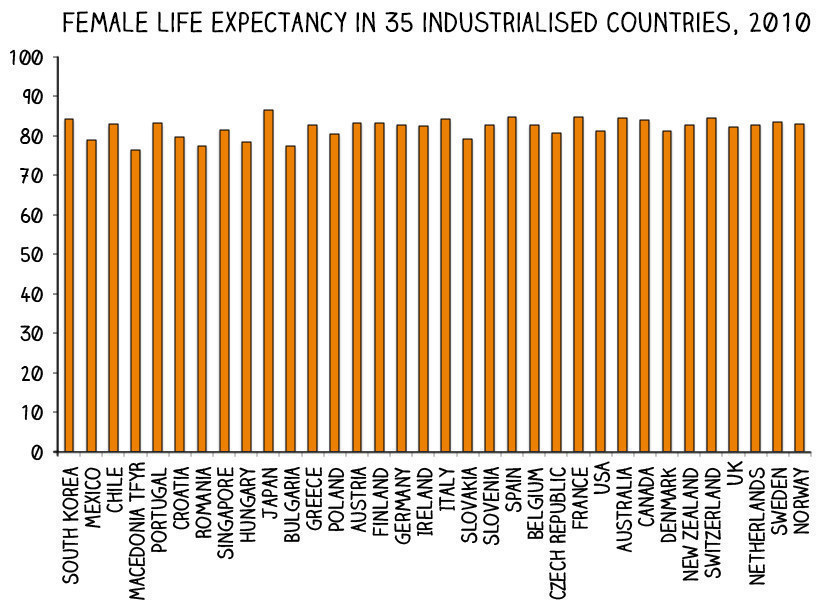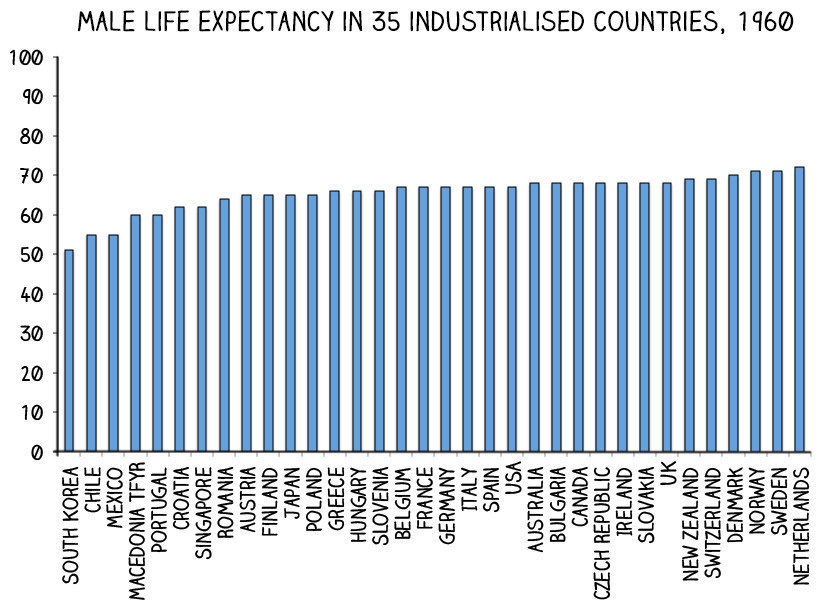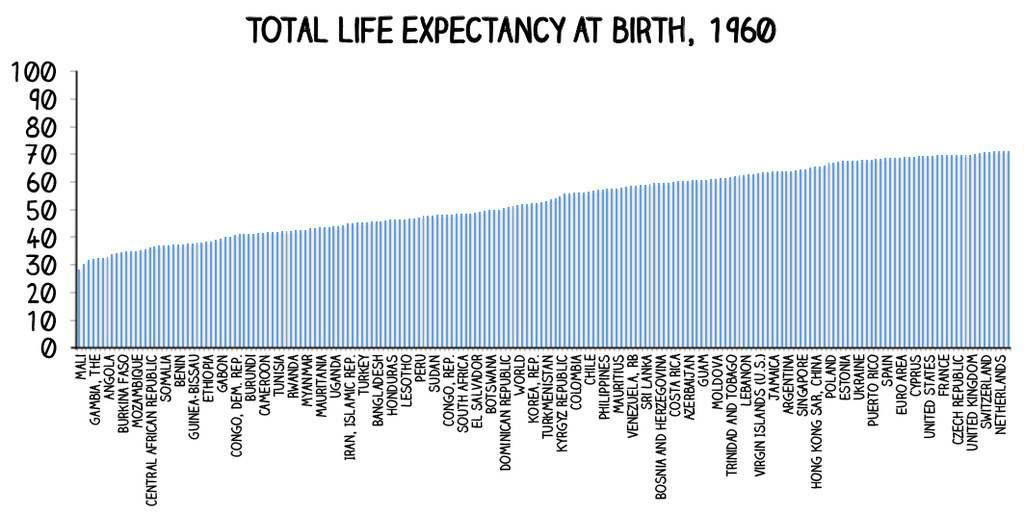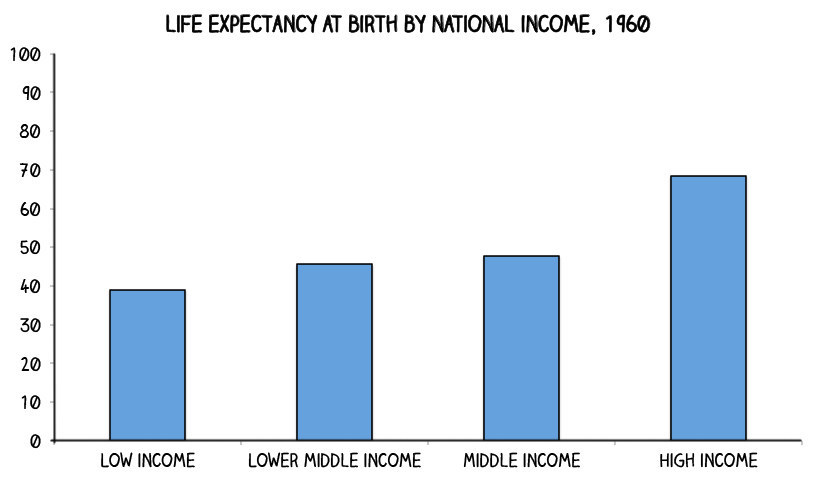Everyone knows we're living a lot longer than we used to.

According to the World Bank, a child born in 2014 will on average live for more than 71 years. In 1960, it could have expected just 52.
Now a new study in The Lancet has suggested that the change is going to be almost as dramatic in the next few years.
It looked at 35 industrialised countries around the world, and used statistical techniques to project how it thinks life expectancy will change between now and 2030.
Here's how it thinks life expectancy is going to go up in those countries, for men:
And for women:
This change has been going on for a while. Here's how life expectancy for men went up in those 35 countries between 1960 and 2010, using World Bank data for 1960 and The Lancet's study for 2010:
And for women:
It's worth focusing in one country here. Look at the furthest left bar. Here's how life expectancy for women in South Korea will have changed, between 1960 and 2030:
A girl born in South Korea in 1960 could have reasonably expected to live just 56 years, the lowest in the sampled countries. If the Lancet study is right, a girl born in 2030 will probably live to see her 90th birthday.
Other countries, notably the USA, will see less dramatic gains.
According to The Lancet, the gains in the next few years will be mainly because people are actually living longer.
Most of the gains in life expectancy at birth over the last few centuries have come because fewer children are dying very young. But most of the gains predicted in this study come from people living further beyond their 65th birthday.
The study also says that the gap between male and female life expectancy is expected to narrow.
Life expectancy has been going up everywhere – not just in the richer parts of the world.
This study only looked at 35 countries, all of which are quite rich. But the story is similar in less developed parts of the globe as well. Here's how life expectancy at birth (for both sexes) looks if you take the data for all the countries of the world from 1960 to 2014.
And in fact the gains have been much greater in poorer countries.
That's driven in large part by gains in China and India, but sub-Saharan Africa has made huge progress too.
So while the world might seem pretty shit at the moment, here's a nice reminder that actually at least one thing is getting better.
CORRECTION
This post has been updated to correct an error in the first graph.


